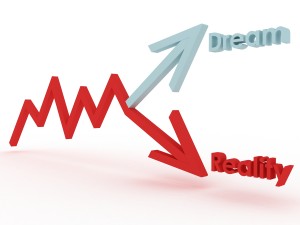
The Sequence of Your Investment Returns May Matter More Than You Think
Everyone knows that when it comes to investing, you have your good years, and you have your bad years. What is surprising is that the order that those returns occur matters a lot more when you are withdrawing an income, then when you are letting it grow.
We’ll start our examples with a $100,000 portfolio. We will assume that you invest your money for 3 years and you experience 3 different rates of return; +7%, +27% and –13%. If you add these 3 rates (7+27-13 = 21) and divide by 3, you will get a arithmetic average of 7%.
If your $100,000 made 7% in the first year, then made 27% in the second year and lost 13% in the third year, your $100,000 would be worth $118,224.
If the order, or Sequence of Returns was changed to +24%, –13% and +7%, guess what your $100,000 would be worth? It is the same $118,224. In fact, if you use ANY combination of these 3 rates of return, you will end up with the same result $118,224.
Some people find this hard to believe until they do the math themselves. And we could mix up 4 or 5 different returns, and we would see the same result regardless of the order used. But, what does this mean to your investment strategy? It means that the Sequence of Returns did not matter! This will always be true as long as no money was withdrawn from the portfolio.
However, in retirement, many people rely on their investment portfolio to cover some of their expenses every year. Let’s look at what happens to the $100,000 portfolio if we take some money out each year. Let’s see what happens if we withdraw $9,000 each year at the beginning of each year. We actually have 6 possible combinations using our 3 rates of return. Here are the 6 outcomes after 3 years of taking out $9,000 each year;
%Rate of Return End $ Result
+7, +27, –13 = $89,810
+7, –13, +27 = $86,210
+27, +7, –13 = $91,376 best
+27, –13, +7 = $89,576
-13, +7, +27 = $83,924 worst
-13, +27, +7 = $85,724
What we can see here, is that a different Sequence of Returns DID make a difference to what we had after 3 years. The best result ($91,376) was the +27, +7, -13 sequence, while the worst result ($83,924) was –13, +7, +27. (What happens early on sets the course). If we kept repeating the same order of returns in the worst case, the money would be entirely gone in just under 14 years. The best case lasts just under 21 years. This is a lot better but not good enough!
The point of the exercise is that when you are withdrawing money from a portfolio, the SEQUENCE of Returns will have a strong impact on how much money you have left, and how quickly it could run out if you don’t watch it.
In this era of the Singularity where extreme lifespans will become the norm, the Sequence of Returns becomes a very important variable in how long your money will last. Essentially, anything other than a short-term decline in your total investment capital becomes a no no. When you have to make your money last maybe 50 years or maybe more then 100 years, not only should your capital not reduce, but it should be growing along with the income generation of the portfolio – to keep up with inflation.
The creation of sustainable streams of income that keep up with inflation becomes the paramount retirement planning goal. (OR have so much money the rate of return is not so important!!)
I will be getting into the most important income creation strategies, and capital creation strategies in future posts. Stay tuned!
Michael





